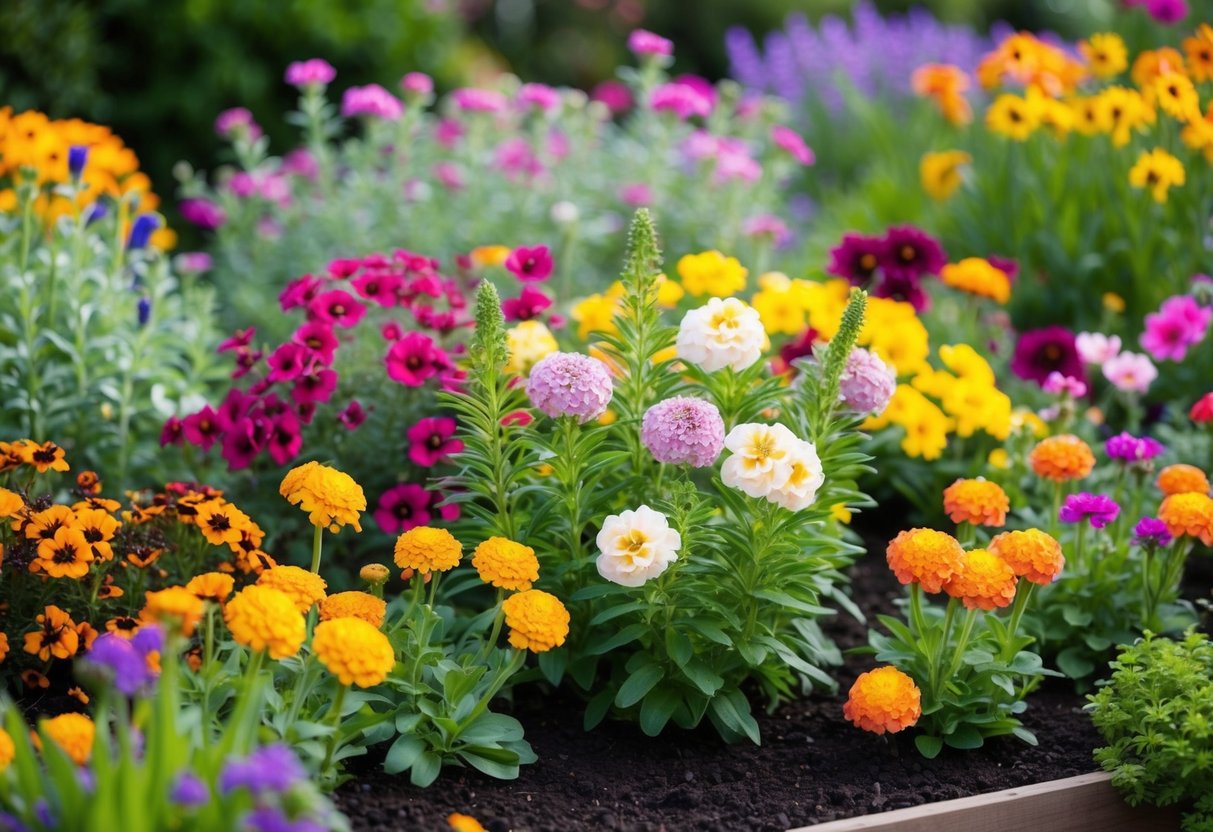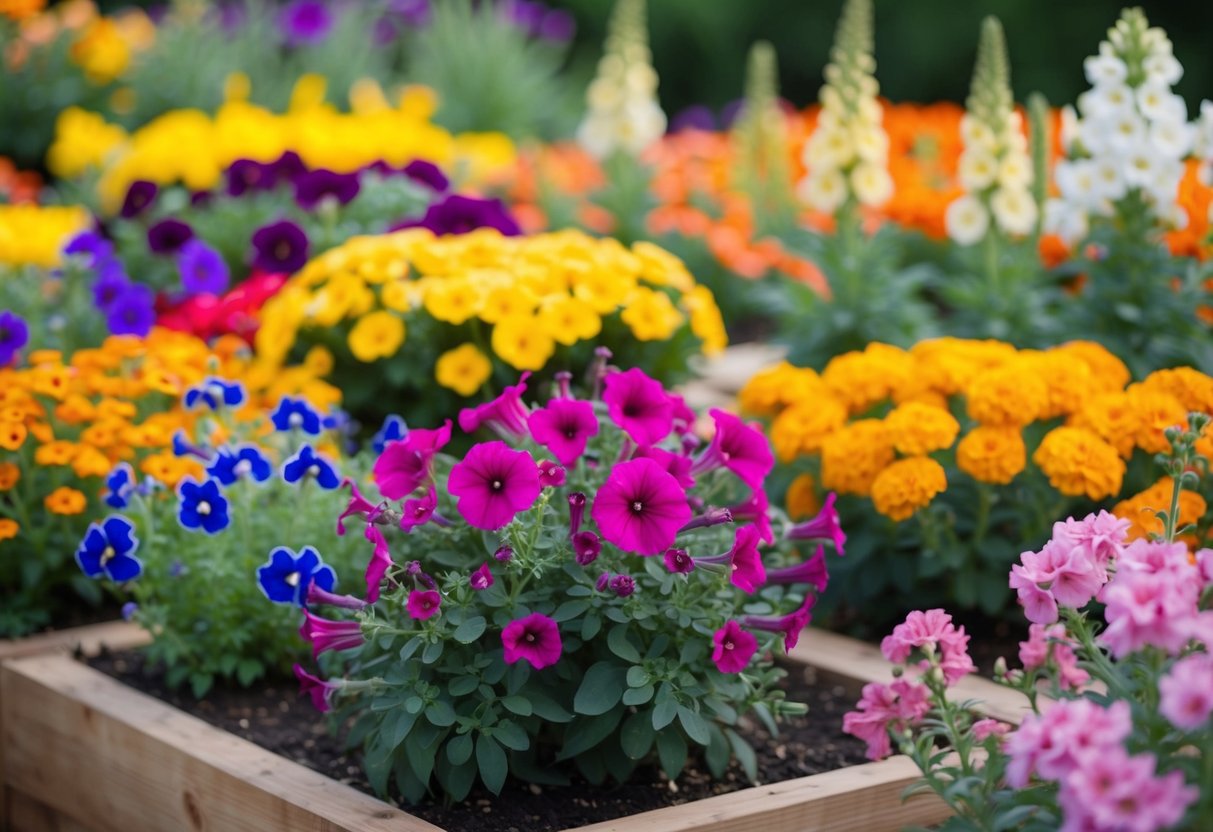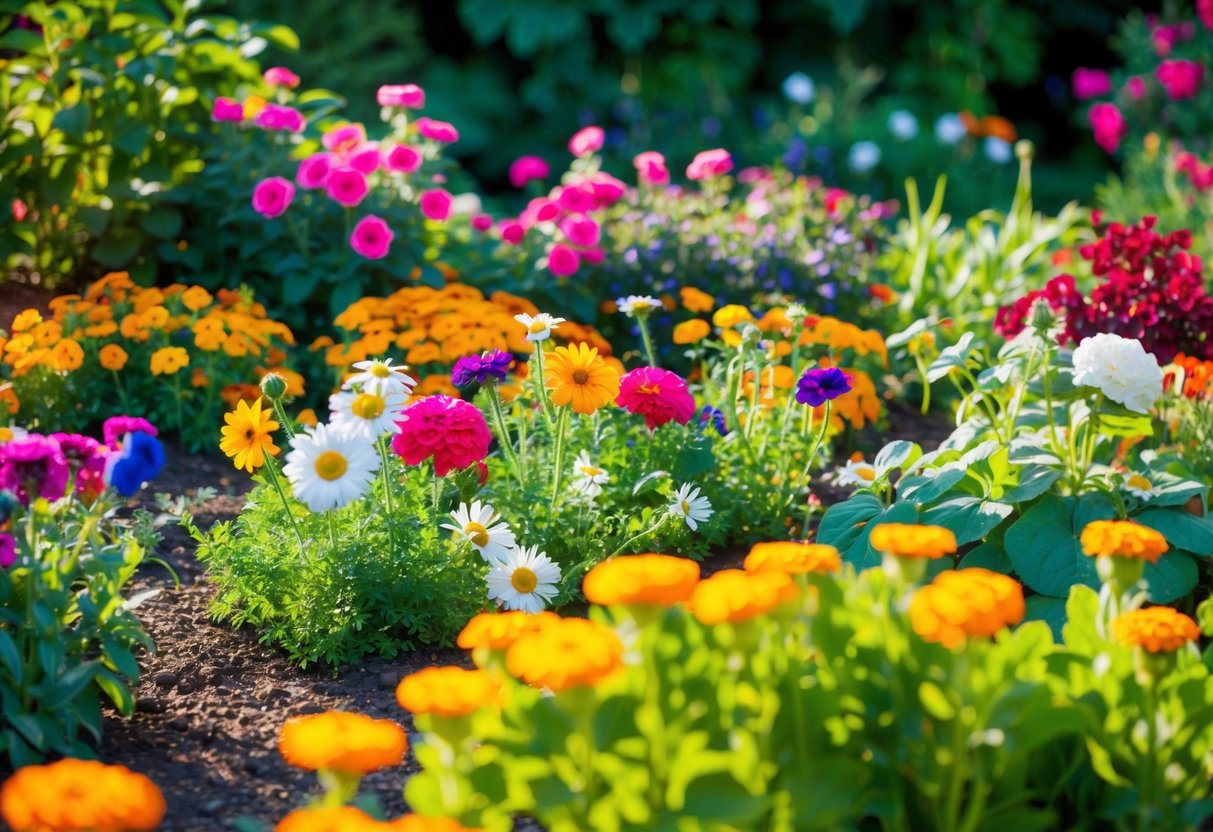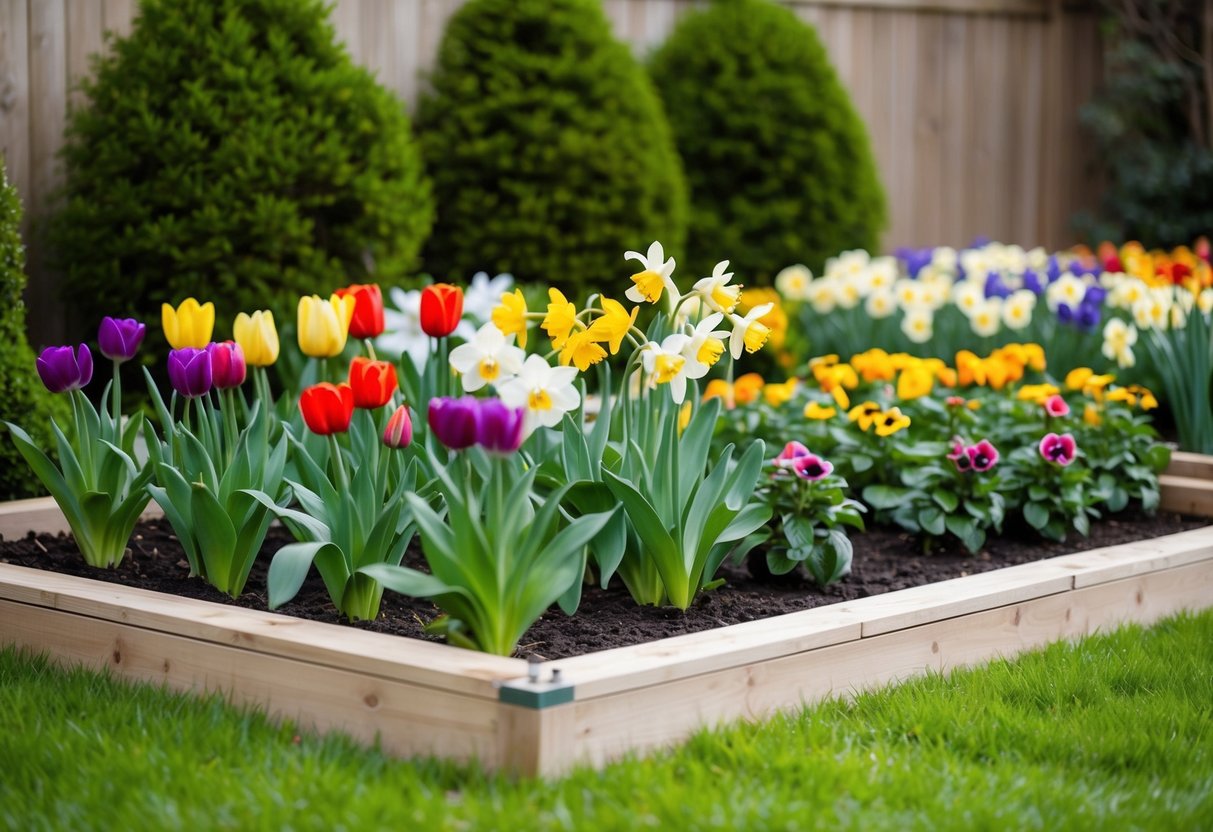What Flowers Are Good for Garden Beds? Top Picks for Vibrant Blooms
Imagine stepping into your outdoor space filled with vibrant colors and delightful scents. Your garden beds can be transformed into a captivating display with the right flowering plants. Peonies are a stunning choice because they add elegance and can last for many years when cared for properly. They bloom in late spring to early summer, offering a burst of color to your garden.

Consider adding lavender to your garden beds. It not only thrives in sunny spots but also provides a welcoming fragrance that’s hard to resist. Lavender works great as an edging plant and is a hardy option for various climates. Including lavender in your garden can create a relaxing atmosphere.
For a touch of wild beauty, Black-Eyed Susans bring a cheerful vibe with their bright petals and contrasting centers. They’re perfect for sunny spots and can handle less-than-perfect soil conditions. These flowers are a fantastic option for anyone looking to add easy-care blooms to their garden beds.
Choosing the Right Plants for Your Garden Beds

Picking flowers for your garden beds involves meeting their sunlight, soil, and climate needs. The key is finding plants that match your garden’s specific conditions. By considering these factors, you’ll help your flowers thrive.
Understanding Sunlight Needs
Sunlight is a crucial part of gardening. Some plants love the full sun, needing about six or more hours of direct sunlight each day. These include sunflowers and marigolds. Others prefer partial shade, enjoying the sun for only part of the day. Impatiens and begonias are good examples. Shade-loving plants, like ferns or hostas, do best with minimal direct sunlight.
When selecting plants, observe where the sun falls in your garden. Determine if your garden beds provide enough light for full-sun plants or if they are better suited for shade-tolerant options. Grouping plants with similar sunlight needs ensures they flourish together.
Considering Soil Types
The soil type in your garden bed influences plant growth. Test your soil to know its composition and moisture levels. Some plants thrive in well-draining soil with lots of organic matter like sandy soil, while others prefer the moisture retention of clay soil.
Perennials such as lavender and rosemary need well-draining conditions. Meanwhile, moisture-loving plants like ferns do better in denser soils. You can improve soil drainage by adding organic materials like compost or peat moss. Tailoring the soil conditions helps provide the most suitable environment for your chosen plants.
Selecting Flowers Based on Hardiness Zones
Hardiness zones play an important role in plant survival. Familiarize yourself with your local climate zone to pick flowers that will endure your area’s temperature extremes. For instance, plants like tulips are hardy in colder zones, making them suitable for places with harsh winters.
Many gardening resources provide information on the suitable zones for different plants. Some plants are adaptable across multiple zones, while others thrive only in specific conditions. Checking a flower’s hardiness will help ensure that it can thrive in your region without a struggle. Choose plants that match your climate, and your garden will be full of life.
By keeping these factors in mind, you can create a vibrant and healthy garden bed tailored to your environment.
Popular Perennials for Continuous Blooms

Planting perennials in your garden beds ensures vibrant blooms throughout the season. Coneflowers and Black-Eyed Susans are appreciated for their cheerful, durable flowers, while Daylilies and Hostas provide resilience and lush greenery.
Caring for Coneflowers and Black-Eyed Susans
Coneflowers and Black-Eyed Susans are standout flowering perennials in any perennial garden. These beauties, scientifically known as echinacea and rudbeckia, thrive in sunny spots and are drought-tolerant, making them low-maintenance choices. Coneflowers have vibrant petals, often in shades of pink and purple, while Black-Eyed Susans display bright yellow blooms.
To promote continuous blooming, it’s essential to deadhead spent flowers regularly. Coneflowers benefit from well-draining soil, while Black-Eyed Susans do well in a variety of soils. Both prefer full sun but can tolerate partial shade.
Use a balanced fertilizer in the spring to encourage growth. If your garden tends to dry out, you can appreciate these plants’ tolerance to drought. Their ability to attract pollinators like bees and butterflies makes them a lovely and beneficial addition to your garden bed.
The Charm of Daylilies and Hostas
Daylilies are known for their stunning, trumpet-shaped flowers and wide color range. They bloom vigorously from early summer through fall. You’ll find them especially appealing as they are also drought-tolerant and can adapt to different soil types. It’s easy to care for them with occasional watering and basic fertilization.
Hostas, on the other hand, are celebrated for their lush foliage and varied leaf patterns. While their flowers are smaller, they are great for adding texture to your garden. Hostas prefer shady areas and need moist, well-drained soil.
Grouping Hostas and Daylilies creates a harmonious look with contrasting textures and colors, making them a perfect match for shaded and partially shaded garden beds. Their combination of rich leaves and colorful blooms adds depth and beauty to your space.
Annuals to Add Color and Variety

Adding annual flowers to your garden can give it a burst of color and change throughout the growing season. Annuals like zinnias, marigolds, pansies, and calendula can provide a variety of textures and colors that keep your garden visually exciting. They are ideal for filling in spaces and making the garden look more vibrant.
Vibrant Zinnias and Marigolds
Zinnias are a popular choice for garden beds due to their bright colors and ability to thrive in sunny spots. They can grow in many colors, including red, pink, orange, and purple. These flowers bloom all summer long and are excellent for use as cut flowers. Zinnias require well-drained soil and regular watering for the best growth.
Marigolds are another excellent option for adding color. They are easy to grow and their bright yellow, orange, and red flowers can be seen from afar. Marigolds also have a pleasant scent that helps keep pests away. They do well in full sun and, like zinnias, benefit from well-drained soil. Both zinnias and marigolds are perfect for adding continuous blooms to your garden.
Cool-Season Favorites: Pansies and Calendula
Pansies are perfect for cooler seasons. They can germinate and show early blooms in spring or fall, adorning your garden with vibrant colors like blue, purple, and yellow. Pansies prefer cooler temperatures and can survive mild frosts. Regular watering keeps them lush and healthy, making them a reliable choice during transitional seasons.
Calendula, known as pot marigold, is appreciated for its bright yellow and orange blooms. It is hardy and can also thrive in cooler temperatures. Calendula grows best in full sun but can tolerate partial shade. These flowers can add a pop of color to your garden when not much else is blooming. Their petals are edible, adding an unexpected twist to your garden’s charm.
Special Considerations for a Flourishing Flower Bed

Creating a flourishing flower bed involves attracting helpful pollinators while managing pests and ensuring pet safety. These factors are essential for a thriving garden.
Attracting Pollinators with the Right Plants
Pollinators like bees and butterflies are key to a healthy garden. To invite them into your garden, consider planting flowers such as bee balm and salvia. These plants offer vibrant colors and produce nectar that attracts pollinators, which can improve plant growth.
Arranging your plants in clusters can make it easier for pollinators to find their favorites. You should aim for a variety of flower shapes and bloom times to ensure a continued presence of pollinators throughout the season. This not only enhances the garden’s aesthetics but also supports the local ecosystem.
Dealing with Pests and Pet Safety
Garden pests can be challenging, but careful management can prevent damage. Introduce natural predators like ladybugs or consider planting pest-resistant flowers. Avoid using chemical pesticides that can harm both pollinators and pets.
If you have furry friends, keep an eye out for plants that might be toxic to pets. Avoid plants known for their toxicity and opt for safer alternatives. Creating physical barriers or designated pet spaces within your garden can prevent accidental ingestion and keep your pets safe while enjoying your flourishing garden.
Maintaining Your Garden Beds for Year-Round Beauty

Keeping your garden beds beautiful all year requires regular care and attention. Key practices include deadheading and pruning to encourage growth, as well as using effective mulching and irrigation strategies to retain moisture and nutrients.
The Importance of Deadheading and Pruning
Deadheading is the process of removing spent blooms from your plants. By deadheading regularly, you encourage new growth and more blooms. This simple task can make a big difference in maintaining a vibrant and colorful garden. Pruning helps in shaping plants and removing damaged or diseased branches. It allows sunlight and air to flow through, which is crucial for healthy plant growth. Both practices help to maintain the beauty of your garden beds by encouraging more flowers and preventing overcrowding.
Mulching and Irrigation Strategies
Mulching helps in retaining soil moisture, suppressing weeds, and adding essential nutrients back into the soil. It can keep your garden beds neat and tidy. Using organic mulch like bark or straw not only looks good but also improves soil structure over time. Irrigation is equally important, especially in maintaining plants in raised beds, where drainage might be quicker. You can use drip irrigation systems or soaker hoses to provide consistent moisture, ensuring that your plants remain healthy and vigorous. Combining these practices with well-drained soil can ensure your garden beds flourish throughout different seasons, even supporting winter flowers.







